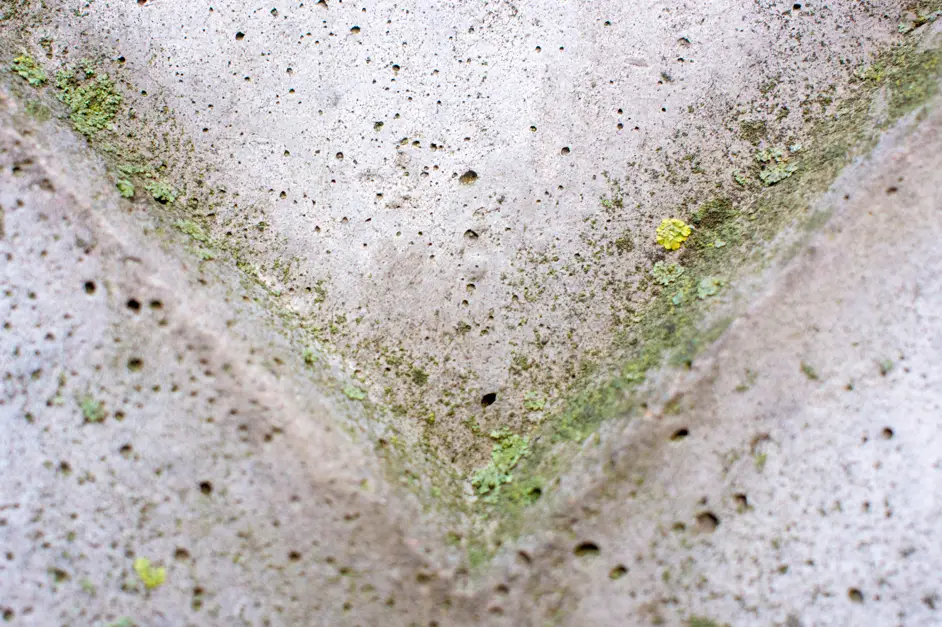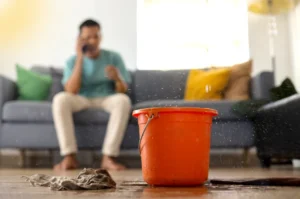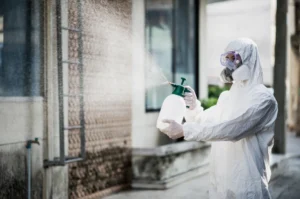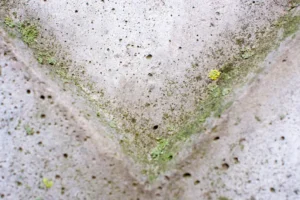Mold doesn’t always announce itself with big, obvious patches. It often starts in hidden corners or behind walls where it quietly spreads, damaging your home and potentially affecting your health. Many homeowners don’t realize there’s a problem until symptoms, both physical and structural, become too big to ignore.
This guide breaks down the early signs of mold in house environments so you can spot issues early and prevent costly damage.
A Musty Smell That Won’t Go Away
One of the earliest and most overlooked signs is a persistent musty or earthy smell. This odor is often strongest in damp areas like basements, laundry rooms, or bathrooms, especially where ventilation is poor. Even if you don’t see mold yet, this smell suggests mold spores may be growing behind walls or under floors, releasing compounds that produce that recognizable scent.
These microbial volatile organic compounds (MVOCs) are the byproducts of mold metabolism. If the smell seems to linger no matter how often you clean, it’s worth investigating further. Air fresheners may cover it temporarily, but they won’t address the root problem hiding behind your walls or under carpets.
Unexplained Stains or Discoloration on Walls and Ceilings
Stains that appear without an obvious cause are worth paying attention to. Mold often starts as faint yellow, green, brown, or black patches, especially in humid areas or places where moisture collects. These marks can show up on drywall, wood, wallpaper, or tile grout and often grow larger over time.
Unlike regular dirt or dust, these stains usually return after cleaning or even spread further. If you notice patterns or clusters of discoloration, especially in corners or near windows, it’s a clear sign that moisture has taken hold and mold could be growing underneath the surface.
Paint or Wallpaper That Starts to Bubble or Peel
When moisture builds up behind walls, it can cause the surface materials to separate. Paint may start bubbling, cracking, or peeling—especially in bathrooms, kitchens, or around windows where condensation is common. This isn’t just a cosmetic issue—it’s often a sign that water has gotten behind the paint and mold may be growing beneath it.
Homeowners might assume it’s due to age or poor-quality paint, but when it occurs in humid areas or near water sources, mold should be considered as a likely cause. Addressing the underlying moisture source is key to stopping the mold from spreading further inside the walls.
Read More: How Long Does Mold Remediation Take
Allergy Symptoms That Seem Worse at Home
Have you or someone in your household developed sneezing, coughing, nasal congestion, or skin irritation that improves when you leave the house? Mold spores in the air can trigger or worsen respiratory symptoms, especially for people with allergies, asthma, or compromised immune systems.
These symptoms often go overlooked because they mimic seasonal allergies or common colds. But if you notice a consistent pattern—where your symptoms flare up at home and ease outside—it may be worth considering an indoor mold issue as the underlying cause.
Condensation on Windows, Pipes, or Walls
Constant condensation is a clear indicator of excess indoor moisture. If you regularly see water droplets forming on your windows, metal fixtures, or even walls, it’s a sign that the air inside your home is too humid—a perfect breeding ground for mold.
Moisture from cooking, bathing, or drying clothes indoors can build up without proper ventilation. Over time, this can lead to water damage in the walls, encouraging mold growth in hidden areas. Addressing humidity early with ventilation, dehumidifiers, or insulation improvements can prevent mold from taking hold.
Warping or Soft Spots in Walls and Floors
Mold often grows in areas where water has already caused some damage. You might notice walls that feel soft to the touch, wood flooring that seems warped or cupped, or tiles that lift from the surface. These changes can develop slowly but are strong indicators that moisture has seeped deep into the materials.
Even if the mold isn’t immediately visible, these structural symptoms point to deeper issues. Behind that soft drywall or buckled floorboard, there could be colonies of mold feeding on the moisture. Acting quickly can help preserve your home’s structure and avoid more expensive repairs down the line.
Visible Mold Growth in Hidden or Unused Areas
If you’ve spotted mold in your basement, attic, crawlspace, or behind large furniture, it’s likely not the only area affected. Mold tends to grow in dark, damp, and undisturbed places—often spreading undetected until it becomes severe.
Even small patches should be taken seriously. Mold spreads through microscopic spores, which can travel through vents and affect the air quality throughout your entire home. Cleaning surface mold yourself may work for small spots, but larger or recurring growth often signals a deeper, hidden problem that requires professional remediation.
Read More: Top 10 Water Damage Restoration Tips – Expert Guide 2025
Concerned About Mold Growing in Your Home?
Ignoring mold won’t make it go away, in fact, it usually gets worse with time. At Mold Master Restoration, we specialize in detecting hidden mold and removing it completely to protect both your health and your home. Our expert team uses proven techniques and professional-grade equipment to identify moisture sources and stop mold at its root.
Book your inspection today and breathe easier knowing your home is in expert hands.





